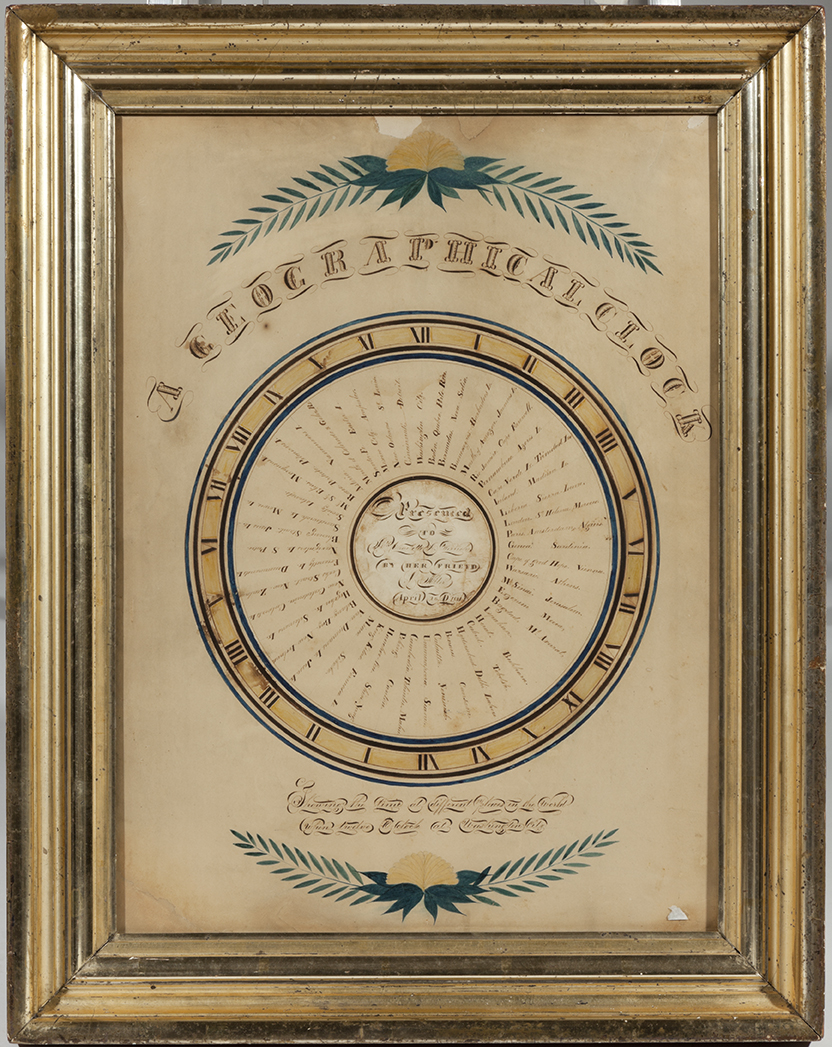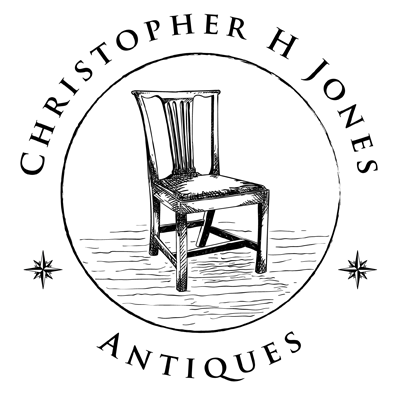A GEOGRAPHICAL CLOCK
Pen and Ink with Watercolors on Paper
L. Holter
Pennsylvania 1841
American
Concentric circles with various places marked around the center. Keyed to Washington City, District of Columbia.
A Spencerian note and presentation “Showing the Time in Different Places in the World when twelve o’clock at Washington City”,
“Presented to Mrs. Charlotte A. Weiricke by her friend L. Holter April 26 AD 1841”.
In a gilt frame, 28 1/4″h. 22 1/2″w.
This rendering of a geographical clock is based on a version published in a geography textbook, Rudiments of Geography for schools, on a new plan: designed to assist the memory by comparison and classification written by the American geographer William Channing Woodbridge (1794-1845), published in Hartford CT in 1832. Woodbridge became the father of American Geography and a zealous educational reformer. The clock is followed by a set of problems for students to calculate the difference between cities around the world.
Global confusion about time zones persisted in the 19th century. In America, with the growth of railroads traversing great swaths of territory time calculation became a serious problem for people travelling hundreds of miles a day by train. Every city in the United States used a different time standard so there were more than 300 local sun times to choose from. In England, standard time was implemented first in the 1840’s by the railroads, to keep their train schedules organized. As is clear by this illustration, any location could be used as a meridian. Woodbridge chose the capital, Washington City from which to calculate global time changes.
In 1884, the International Prime Meridian Conference in Washington was convened and established the Greenwich Meridian as the prime meridian and time. The international 24-hour time-zone system grew from this, in which all zones referred back to GMT on the prime meridian.
This illustration was rendered as a gift to Mrs. Charlotte Weirich (nee Schaeffer; 1822-1886) by Mr. L or T Holter, as revealed in the beautiful Spencerian script in the cartouche. Charlotte Schaffer Wierich married Samuel Kimball Weirich (1818-1901), and lived in Canton Township, Washington County Pennsylvania. The Weirichs were a prosperous and prominent local family, farmers and local politicians. Mr. Holter remains more elusive, but it is perhaps likely that this clock was made as a token of affection by a resident student whose teacher was using Rudiments of Geography as a textbook.


